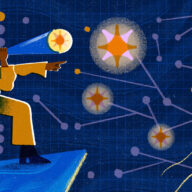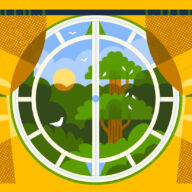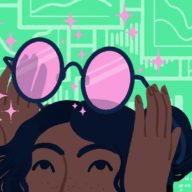A new year represents a clean slate, a chance to be the best version of yourself. But what’s the best version of yourself? That question requires reflection, and often, resolutions to improve. Finding and focusing on the right things is the most important outcome of reflection and resolve, but it can be overwhelming to tackle everything at once.
For many people, professional development is a big focus area for resolutions. (And, let’s be honest, it’s a year-round work-in-progress.) Here’s how to create a career development plan that sets you up for success in the new year and beyond.
Develop valuable skills
Career growth requires that you build skills that are desirable to employers. To figure out which skills employers value most, take a look at the macro trends affecting work as well as the micro trends affecting your discipline.
Technology has been displacing or evolving skill sets for centuries. (Printing press, anyone?) The invention of the internet ushered in a new era in the news and media space, with digital publishers eclipsing printed publications. Automation and robotics changed jobs in the manufacturing and construction industries — or made them obsolete altogether.
Every year the World Economic Forum releases their Future of Jobs Report, which includes a section detailing which skills are rising and declining over the next four years. Check out this list of trending skills:

As you can see, analytical thinking, active learning, and creativity are some of the most important skills for a future-proof skill set.
At the micro level of the tech industry, we see soft skills gaining popularity with employers. HackerRank’s research found that problem-solving is the number one skill employers look for when hiring developers, followed by programming language proficiency.
Finally, see if the pendulum is swinging from specialist to generalist, or vice-versa. The World Economic Forum found that generalists are more hire-able than specialists, receiving more offers and higher signing bonuses. Developing a diverse set of skills provides mobility inside your company and makes you more valuable in the job market.
Become T-shaped
No, don’t force yourself into a tricky yoga pose: the “T-shaped professional” describes the perfect balance between the generalist and the specialist. This type of worker boasts broad skills within their discipline and deep skills in a specific area. It’s also a great way to assess your current skill set and identify potential gaps in your skill set. Psychology Today details multiple examples of T-shaped skill sets, including technical managers with high emotional intelligence, foreign language majors with skills in writing or accounting, and even T-shaped teams, which bring together people from different disciplines to solve complex problems. The author shares practical steps for mapping out your current skill set:
- Identify your core skills. Where do you have a depth of knowledge or expertise? How do you apply your skills and in what settings? What skills/knowledge do you need to develop?
- What discipline did you major in or concentrate on in college? How does that discipline apply to the job you’re seeking? Why would a person in that job need or value those skills and knowledge?
- What courses did you take that were more interdisciplinary in nature? Where did you learn to apply your knowledge and skills to other fields?
- Have you developed your oral and written communication skills? Can you discuss your area of expertise with individuals who don’t know as much about your field? How do you communicate the key elements of knowledge in your field? Have you studied the vocabulary of other fields to learn how your field interacts?
- Have you developed your emotional intelligence for succeeding in the workplace?
For a broader understanding of the potential skills that are expected in your discipline, take a look at the job descriptions at your company and your competitors. Look for jobs from entry-level to executive-level. What are the common tasks associated with each role? What are the soft-skill requirements? Are there specific frameworks, technology stacks, or other tools noted in most of the listings? Compile a list of the commonalities, and see how your skills stack up. Are you missing any crucial pieces?
Close the gaps
Once you understand the macro trends in your discipline and the gaps in your individual skill set, it’s time to work on closing those gaps. Continuous learning is the key to any career development plan, but you have to create space for it in your day.
Dom Price, the work futurist at Atlassian, is fond of the Start, Stop, Continue method. “Sometimes the activities that you stop doing are more important than the activities you start or continue. Removing tasks that are no longer useful frees up mental space to absorb new, helpful information. It frees up time to focus on more high-impact activities. And it teaches you to continually evaluate your habits to ensure that only the most useful actions remain on your daily checklist.”
Grab a piece of paper and make three columns: Start, Stop, and Continue. Write 3-5 bullets in each column that represent regular activities in your schedule. This isn’t about setting specific goals at the moment, but understanding what currently takes up your time, and what you want to take up your time in the future. For example, you might have many standing weekly meetings but you don’t find them valuable. Maybe you add “attending useless meetings” to the Stop column. Let’s say you want to stay more up-to-date on developments in your field but you don’t have time to read articles. Maybe you add “read more articles” to the Start column.
Not sure what kinds of activities should fall to the wayside? Here’s a list that Dom shared last year to help you get started.
Now it’s time to figure out how to add, remove, or keep each item. Using the “stop attending useless meetings” example above, you could start a collaborative document to gain consensus from the group. Or, you could use a project ticketing system to share progress toward completion. Once you’ve moved the useless meetings to a more suitable format, you’ll have time to accommodate “read more articles” in your Start column. Next, set a specific goal like reading one article per day. The steps to get there might include making a list of experts and relevant publications in your field, following them on social media or subscribing to their newsletter, and blocking off an hour each morning on your calendar for reading time.
While the new year is a great time for reflection and resolution, career development planning is a constant work in progress. Once you’ve identified growth areas, break each element down into a set of specific, measurable goals. Check your progress by conducting a retrospective each quarter (you can re-use the Start, Stop, Continue method to get started) and adjust your goals and activities accordingly.
Learn more about retrospectives









































